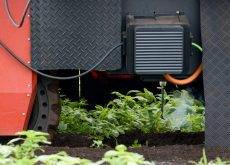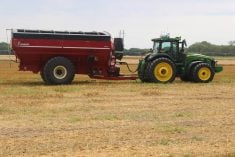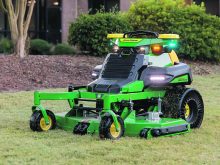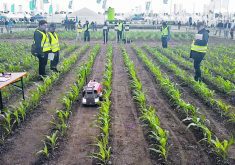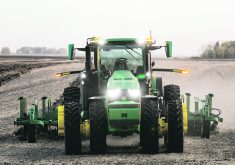A Canadian tech start-up, Mojow Autonomous Solutions, builds navigation controllers that enable autonomous tractor operations.
They’ve been installed on a Case Magnum 300-horsepower tractor and the company plans to use them to harrow and land roll 10,000 acres this summer.
Mojow fired up in 2020 and now has 12 people working in its Edmonton development office.
Owen Kinch, co-founder and president, works from the corporate office in White City, Sask. He said Mojow has developed a sensor suite that includes LIDAR.
However, many of the sensors are used as secondary validation tools for the main sensors it developed called EYEBOX, which uses low-cost video cameras.
Read Also
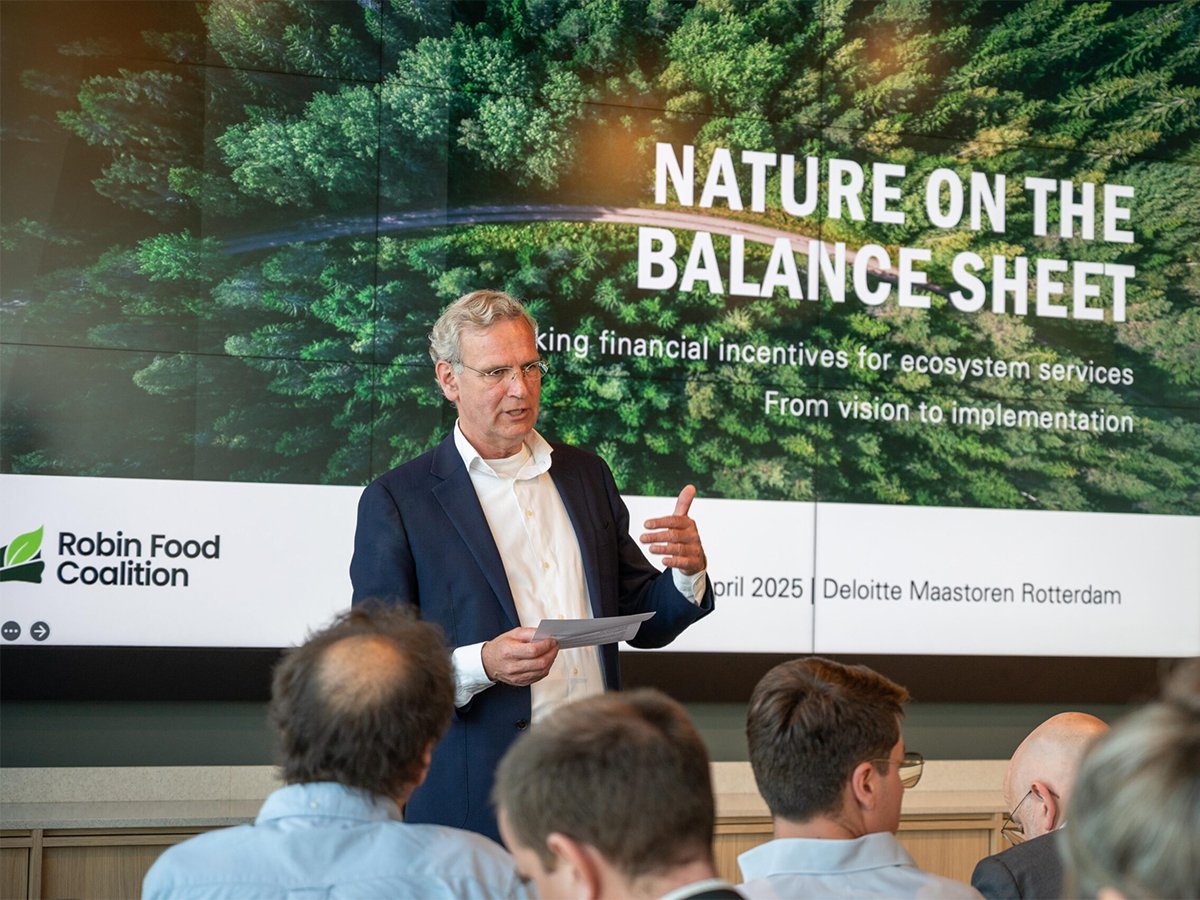
Activist urges new way to measure profitability
Organic activist praises Mark Carney for spearheading the Task Force on Climate-related Financial Disclosures.
“Along with GPS and a powerful computer, we’re able to process that incoming data, mostly the images, that are passed through our deep neural network that classify the pixels,” Kinch said.
“We create a digital representation of everything around the tractor, so anything that’s important for the tractor to operate autonomously, we document and represent that in a way that our computers can understand it.”
He said the sensors create a digital twin, which is a virtual representation of a physical object or process.
“It could be water or a rock in a field, but we need that information as input to our navigation controller so that we can react to a changing work environment, much like humans do today.”
Kinch previously worked for SeedMaster and helped develop the DOT agricultural robot that was later sold to Raven Industries and renamed OMNiPOWER.
A handful of technology and equipment companies are fielding autonomous farm systems that use pre-planned paths to guide autonomous robotic platforms.
The downside of systems that rely solely on this approach is that when an obstacle is detected in a field, the robot may have to stop until an operator can give it new instructions.
With Mojow, if an undocumented obstacle is in the path, the system can identify and adapt its operation without operator involvement.
“First it identifies there’s an object in the path, and if it’s stationary or moving. If it’s moving, we’re able to predict which way it’s moving, and predict where it’s going to be so (the robot) can plan a path and execute that path in real time without any work stoppages,” Kinch said.
The system plugs into a tractor’s CAN bus, and the company’s goal is to offer the system in all major tractor brands.
“We’re reading from the tractors existing sensors, steering sensors, speed sensors and ultimately, we’re taking command of that system and controlling it. (The tractor) thinks we’re part of the system,” Kinch said.
Mojow is focused on developing the system to drive harrowing and packing operations, although the technology could be adapted to any implement with a coverage mission.
“I see it as an easier entry point to the farms utilizing heavy harrow or a roller implement … until the farmer builds up a higher level of confidence in our ability,” Kinch said.
Instead of developing a new equipment platform and implements, he said there’s opportunity to work with equipment infrastructure already established on the Prairies.
“I feel like we don’t need to reinvent the equipment, so to speak. Let’s use the equipment that we have that’s in place, existing equipment with networks that are created around that equipment to keep it operational,” Kinch said.
“Let’s add autonomy to that existing infrastructure, and let’s get the job done.”
Bringing autonomy to farm equipment producers already own allows operators to hop in and drive between jobs without worrying about transporting a robot.
Kinch said a prototype will be operating at the Ag In Motion farm show this summer.
“We’ll have live demonstrations running all day. We’ll be demonstrating specific functions using computer vision techniques that we’re developing. We’ll be showcasing some of our patent pending technologies that are in development today at the show.”




